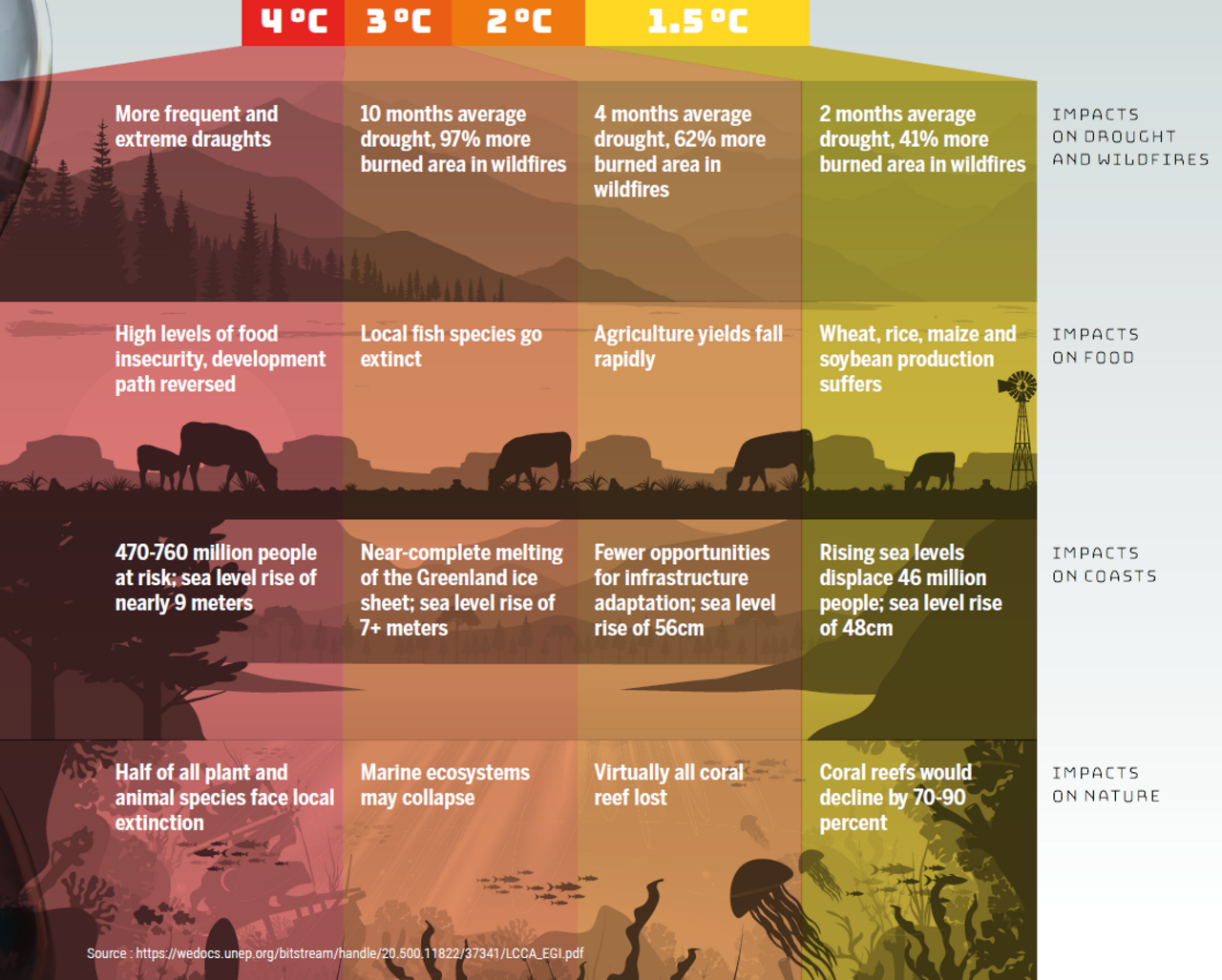Climate change and greenhouse gases
What is the greenhouse effect?
During the day, sunlight passes through the atmosphere and heats up the Earth’s surface. At night, this heat is radiated back into space, but some of the heat is trapped by greenhouse gases (GHGs). As greenhouse gases accumulate in the atmosphere, the Earth becomes hotter.
It will take hundreds of years for the concentration of GHGs in the atmosphere to fall back to pre-industrial levels if we were to suddenly stop emitting all GHGs.
For the past 800,000 years, the concentration of CO2 in the atmosphere was around 200 to 280 parts per million (ppm), which is 200 to 280 molecules of CO2 per million molecules of air. Since 1900, the concentration of CO2 has steadily increased to about 420 ppm today.
The global warming potential(GWP) measures the amount of energy 1 ton of a GHG absorbs relative to 1 ton of CO2 over a given period, usually 100 years. By definition, CO2 has a GWP of 1, since it is the reference gas. Thus, 1 t of CH4 is equivalent to 34 t CO2 and is generally expressed in CO2-equivalent or CO2eq.
Human activity (examples) | Greenhouse gas | Global warming potential (GWP) over 100 years |
Burning of fossil fuels | Carbon dioxide CO2 | 1 |
Cow burps, natural gas pipeline leaks | Methane CH4 | 34 |
Emissions from over-fertilization in agriculture | Nitrous oxide N2O | 298 |
Leaks from refrigerators, air conditioners | Hydrofluorocarbons (HFCs) | 1,000 to 22,000 |

Consequences of Climate Change
The catastrophic effects of climate change in Luxembourg include extended periods with no rain or cloud cover, causing extensive dry spells during the spring and summer, followed by warmer winters with greater risk of flooding.

